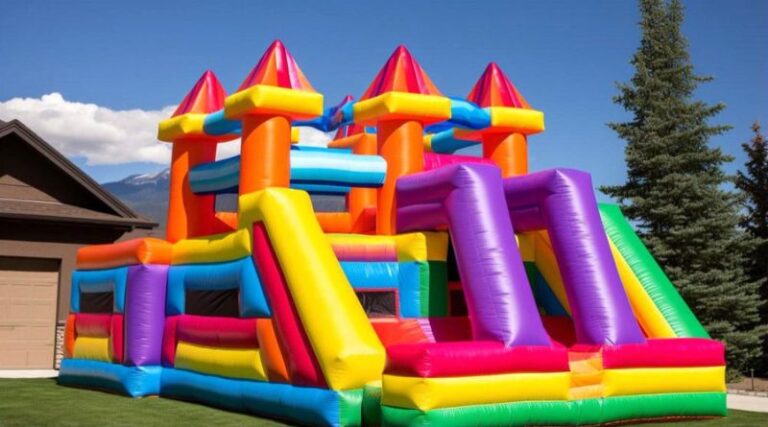
A “House of Hazards” is a term that evokes images of danger, disorder, and risks hidden in the most unexpected places within our homes. These hazards can range from minor inconveniences to life-threatening situations. Understanding the different types of hazards present in a typical household is crucial for creating a safe environment for everyone living there, especially children and elderly individuals. This article will discuss common household hazards, their potential impact, how to recognize them, and most importantly, how to prevent accidents from happening.
Table of Contents
Types of Household Hazards
Household hazards can broadly be categorized into several types, including physical, chemical, biological, and fire hazards. Let’s dive deeper into each category:
1. Physical Hazards
Physical hazards are those that pose a threat of injury due to the environment or physical objects in the home. These include:
- Slips, Trips, and Falls: One of the most common causes of household injuries is slipping on wet floors, tripping over obstacles like rugs or toys, or falling down stairs. These accidents can happen at any age, but elderly people are particularly vulnerable to severe consequences like broken bones.
- Sharp Objects: Knives, scissors, and other sharp objects are ubiquitous in kitchens, bathrooms, and tool sheds. Improper storage or carelessness can result in cuts and puncture wounds.
- Heavy Furniture or Appliances: Large items like bookcases, televisions, or refrigerators can become dangerous if they are not secured properly, especially if there are young children around. Toppling furniture is a serious hazard.
2. Chemical Hazards
Many cleaning agents, paints, and other household products contain chemicals that can be harmful if not used or stored correctly. Chemical hazards in the home include:
- Toxic Cleaning Products: Household cleaners, bleach, and ammonia can pose health risks if inhaled or if they come into contact with skin or eyes. Accidental ingestion is a particular concern in homes with young children.
- Pesticides and Herbicides: Products used to control pests in the home or garden can also be toxic if not handled with care. These chemicals can lead to poisoning if ingested or absorbed through the skin.
- Carbon Monoxide: This invisible, odorless gas is produced by burning fuel in stoves, fireplaces, and heating systems. Exposure to carbon monoxide can be deadly, especially in poorly ventilated homes.
3. Biological Hazards
Biological hazards involve living organisms or their by-products that can cause illness or infections. Common biological hazards in homes include:
- Mold and Mildew: These fungi thrive in damp, dark environments like bathrooms, basements, and kitchens. Mold can trigger allergies, respiratory issues, and asthma, especially in vulnerable individuals.
- Bacteria and Viruses: Kitchens and bathrooms are common breeding grounds for harmful bacteria such as Salmonella and E. coli. Viruses like the flu can spread easily through touch, particularly in areas with high foot traffic.
- Rodents and Insects: Rats, mice, cockroaches, and other pests can introduce harmful bacteria and allergens into your home. They can also damage food supplies and structures, posing a long-term health risk.
4. Fire Hazards
Fires can be catastrophic and are often preventable with the right precautions. Some of the most common fire hazards in the home include:
- Electrical Fires: Faulty wiring, overloaded circuits, and malfunctioning appliances are among the leading causes of household fires. It’s important to ensure that electrical outlets are not overloaded and that appliances are in good working order.
- Open Flames: Candles, fireplaces, and cooking equipment with open flames can quickly become a fire hazard, especially if left unattended.
- Flammable Materials: Household items like paper towels, curtains, and clothing can catch fire quickly if they come into contact with heat or sparks.
How to Identify and Prevent Household Hazards
Preventing accidents and reducing the risk of hazards requires regular inspections, common sense, and implementing safety measures. Here are some strategies for identifying and preventing hazards in the home:
1. Regular House Inspections
Schedule regular inspections of your home, checking for potential hazards in every room. Inspect areas prone to moisture, such as bathrooms and kitchens, to look for mold and mildew. Look under furniture for any sharp objects or dangerous items that might have been forgotten.
2. Keep Sharp Objects Safe
Store knives, scissors, and other sharp objects in high, locked cabinets or drawers, out of the reach of children. Ensure that all sharp objects are properly cleaned, stored, and maintained.
3. Proper Storage of Chemicals
Store cleaning products, pesticides, and other chemicals in a secure, cool, and dry place, away from children and pets. Make sure all products are labeled properly, and use them according to the instructions. Consider switching to eco-friendly, non-toxic alternatives when possible.
4. Check Smoke Detectors and Fire Extinguishers
Test smoke alarms and carbon monoxide detectors monthly, and change the batteries at least once a year. Place fire extinguishers in key areas of your home, such as the kitchen and near any heat sources. Ensure everyone in the household knows how to use them in case of an emergency.
5. Childproof Your Home
If you have young children, use childproof locks on cabinets, safety gates on stairs, and outlet covers in electrical outlets. Make sure furniture is secured to the wall to prevent it from tipping over.
6. Prevent Slips, Trips, and Falls
To reduce the risk of falls, keep floors clear of obstacles like cords, shoes, and toys. Use non-slip mats in the bathroom and kitchen, especially around bathtubs and sinks. If you have stairs, ensure there are sturdy railings on both sides, and consider adding non-slip treads to the steps.
7. Maintain Good Ventilation
Ensure proper ventilation in areas prone to moisture, such as bathrooms and kitchens, to prevent mold growth. Use exhaust fans or dehumidifiers to keep humidity levels in check.
8. Electrical Safety
Check for faulty wiring and ensure all electrical appliances are in good working order. Never overload power strips or outlets, and always unplug electrical devices when not in use.
FAQs About Household Hazards
Q1: What should I do if I suspect carbon monoxide poisoning? If you suspect carbon monoxide poisoning, immediately move to an area with fresh air, such as outside, and call emergency services. Do not re-enter the home until it has been deemed safe by a professional.
Q2: How can I prevent mold growth in my home? To prevent mold growth, keep your home dry by using a dehumidifier, fixing leaky pipes, and ensuring proper ventilation in damp areas like the basement and bathroom. Regularly clean surfaces in high-moisture areas to avoid mold buildup.
Q3: Are there any specific cleaning products that are safer for homes with children? Yes, many non-toxic cleaning products are available for households with children. Look for products that are labeled as “child-safe” or “eco-friendly,” which use natural ingredients instead of harsh chemicals.
Q4: How can I childproof my home effectively? To childproof your home, use safety gates to block stairs, install outlet covers, and keep sharp objects and hazardous chemicals out of reach. Secure heavy furniture to the wall and ensure all windows and doors are safely locked.
Q5: What are the signs of an electrical fire hazard? Signs of an electrical fire hazard include sparks, scorch marks, frayed wires, and tripped circuit breakers. If you notice any of these issues, stop using the appliance immediately and have it inspected by a professional.
Conclusion
A “House of Hazards” can be a dangerous place if its risks are not properly managed. However, by understanding the different types of hazards and taking proactive steps to eliminate or reduce them, you can create a much safer living environment for yourself and your family. Regular inspections, proper storage of hazardous items, and following safety protocols are all essential to preventing accidents. Remember, safety is an ongoing responsibility, and by staying vigilant, you can make your home a much safer place for all who live there.






